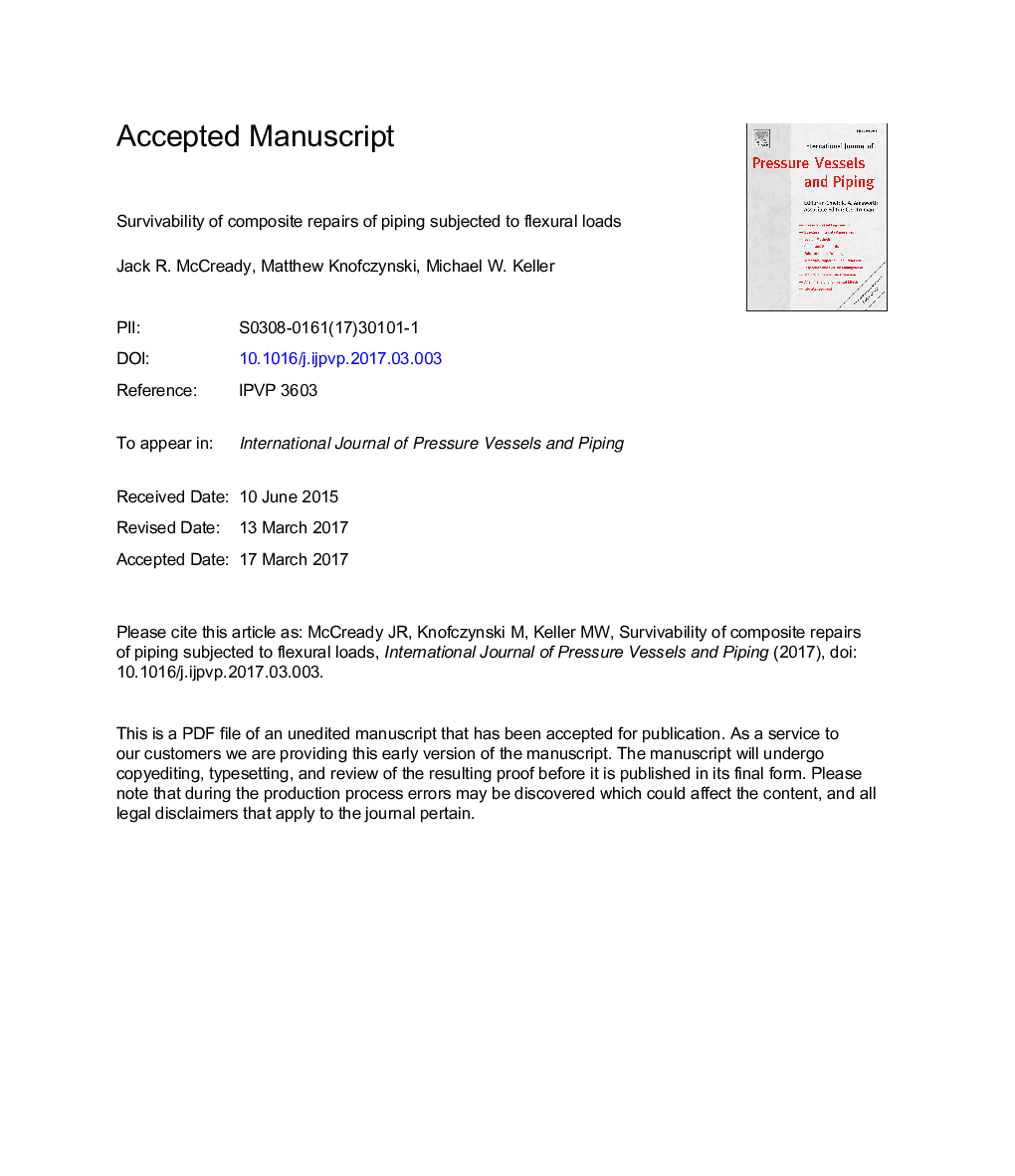| Article ID | Journal | Published Year | Pages | File Type |
|---|---|---|---|---|
| 5016866 | International Journal of Pressure Vessels and Piping | 2017 | 30 Pages |
Abstract
Destructive flexure testing is conducted on twelve specimens of 6 inch schedule 40 pipe with simulated corrosion flaws. Two damage geometries were considered in this research, an axisymmetric flaw and a narrow patch flaw. Damaged pipe was repaired with an in-situ installed and cured composite. The repaired pipes were subjected to a combined loading of internal pressure and external bending. Specimens with axisymmetric flaws failed by composite fracture and delamination followed by substrate pipe burst. Specimens with patch flaws failed by composite fracture and then local collapse of pipe at load application points and were then hydrostatically tested to failure to determine residual strength of the repair. Composite repairs significantly increased the flexural stiffness of the damaged pipe for axisymmetric flaw, but did not for the patch flaw. Post-flexural, hydrostatic testing indicated that the composite repairs were capable of sustaining significant damage while retaining their ability to support the pressure carrying capability of the pipe.
Related Topics
Physical Sciences and Engineering
Engineering
Mechanical Engineering
Authors
Jack R. McCready, Matthew Knofczynski, Michael W. Keller,
